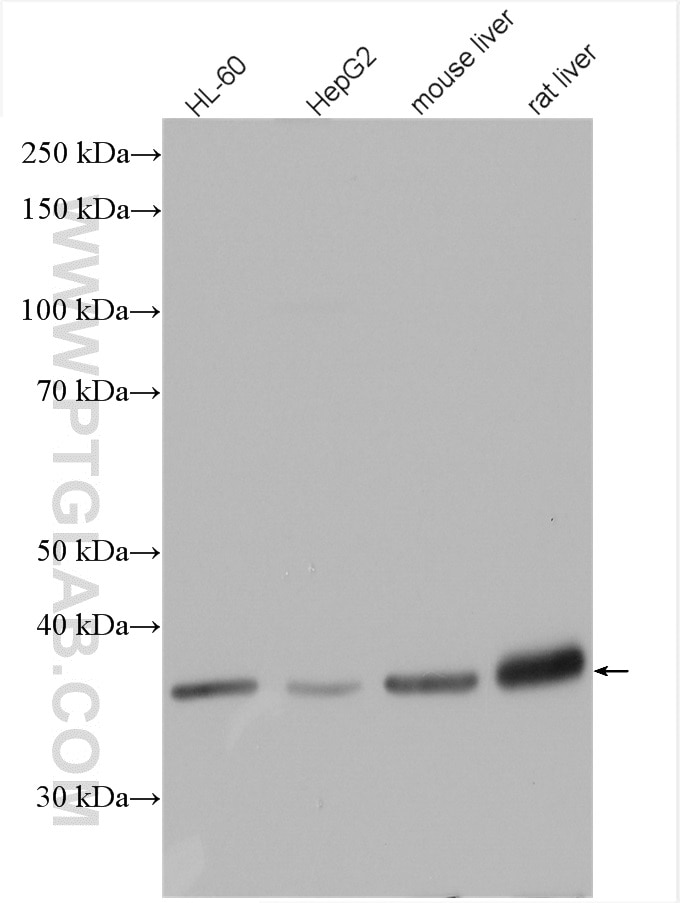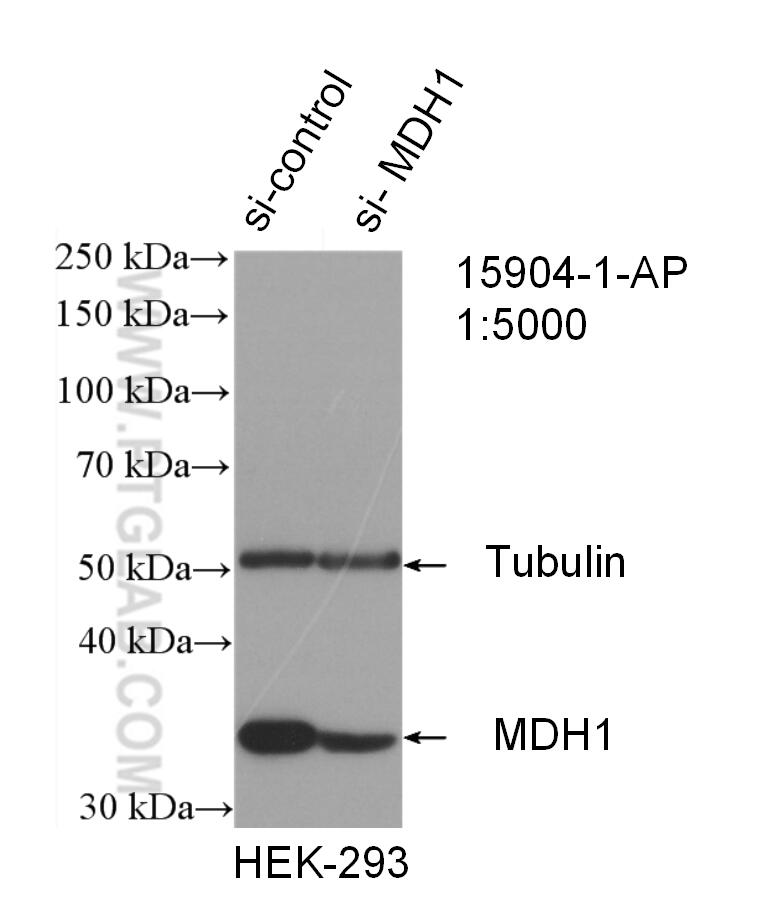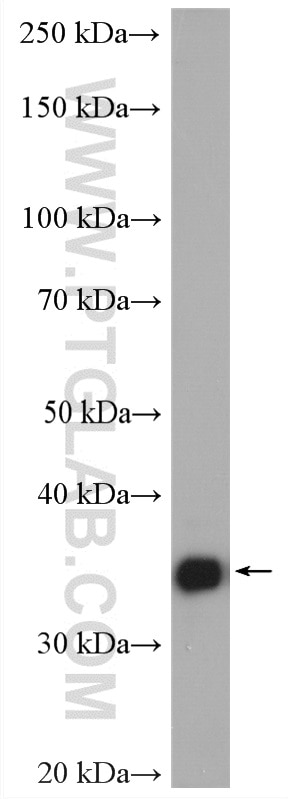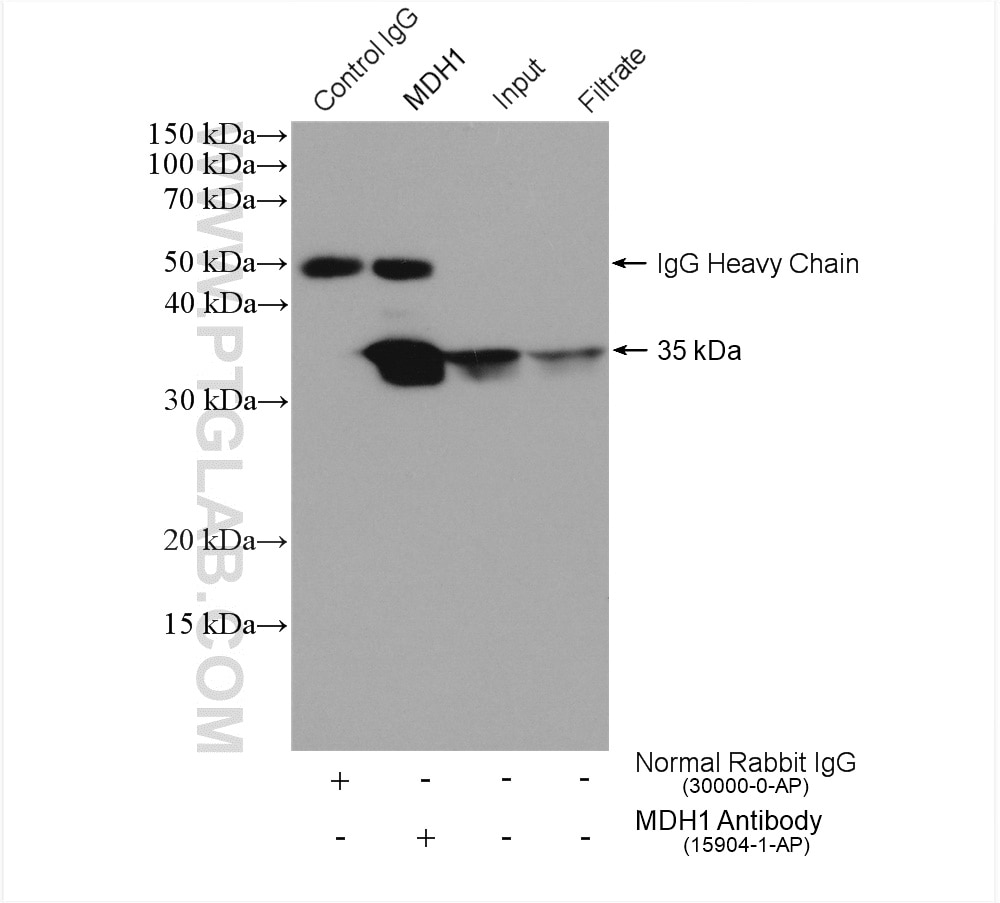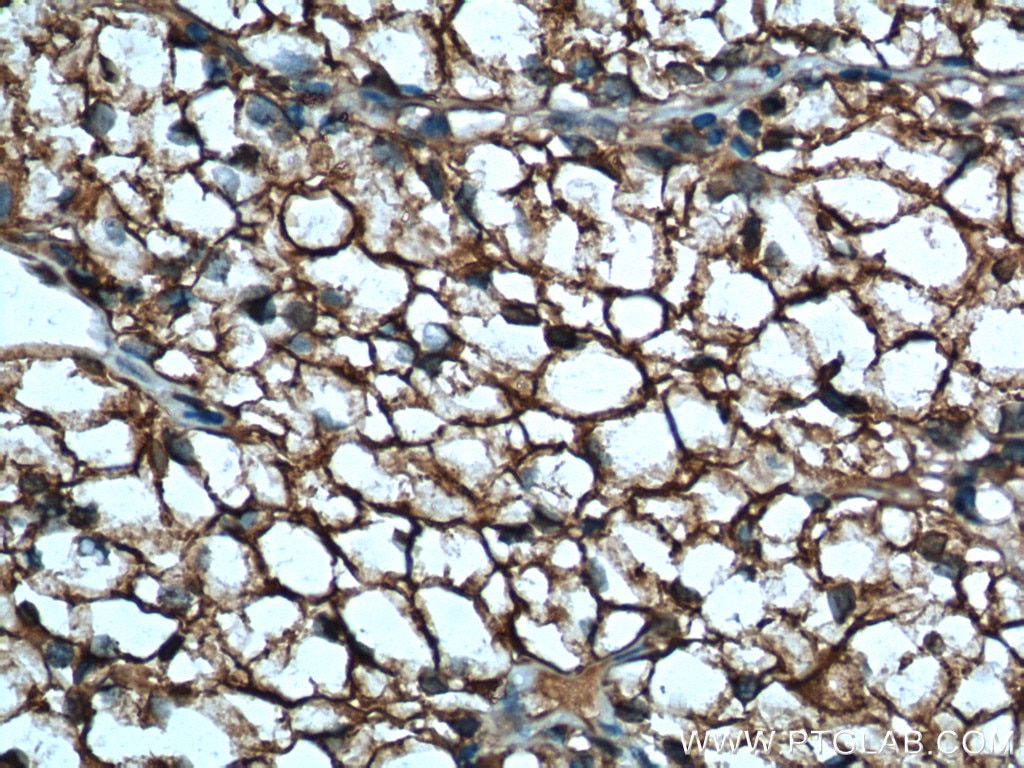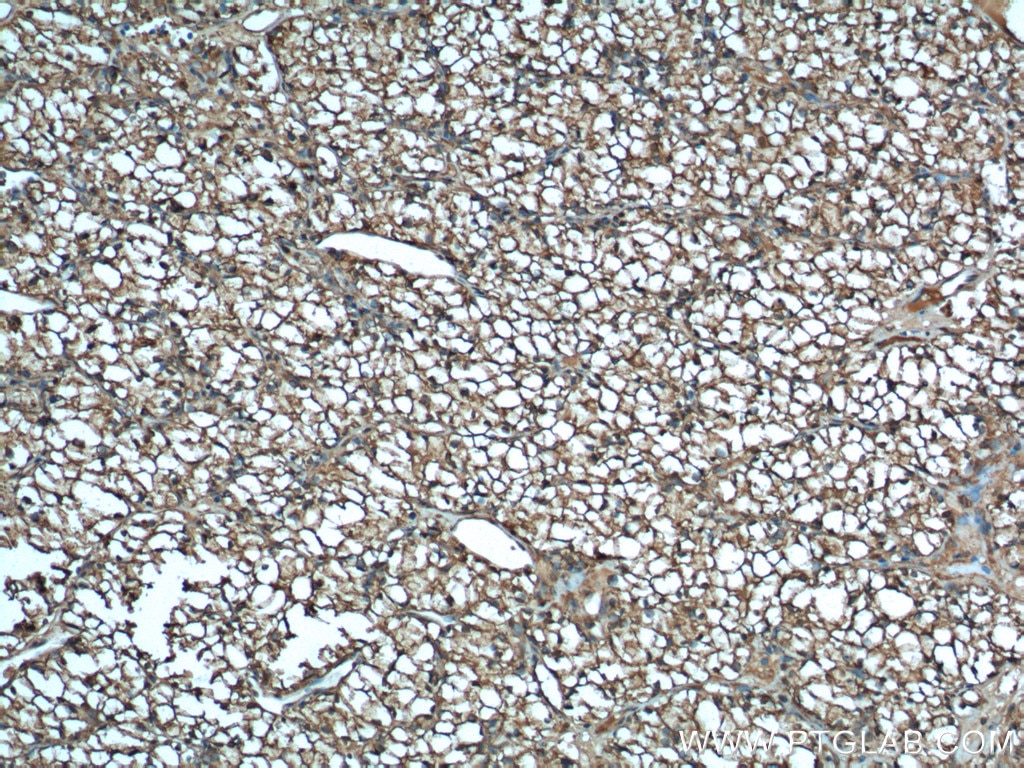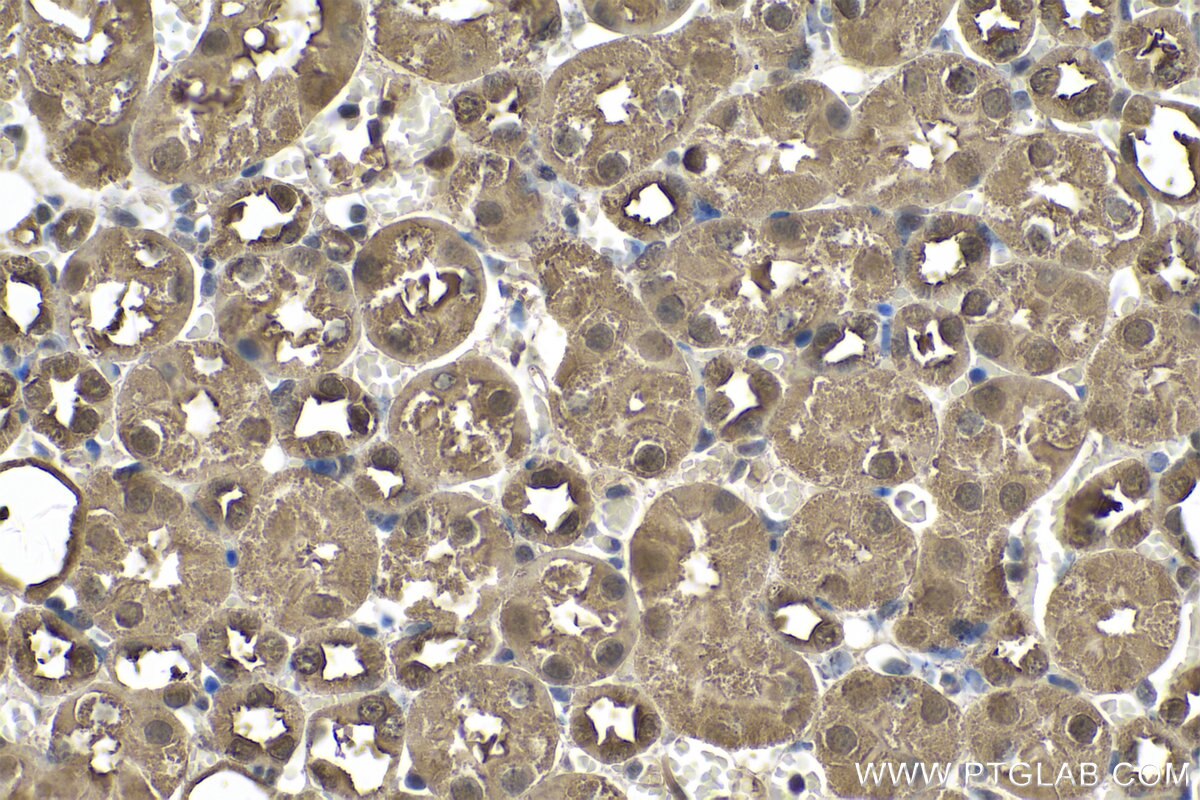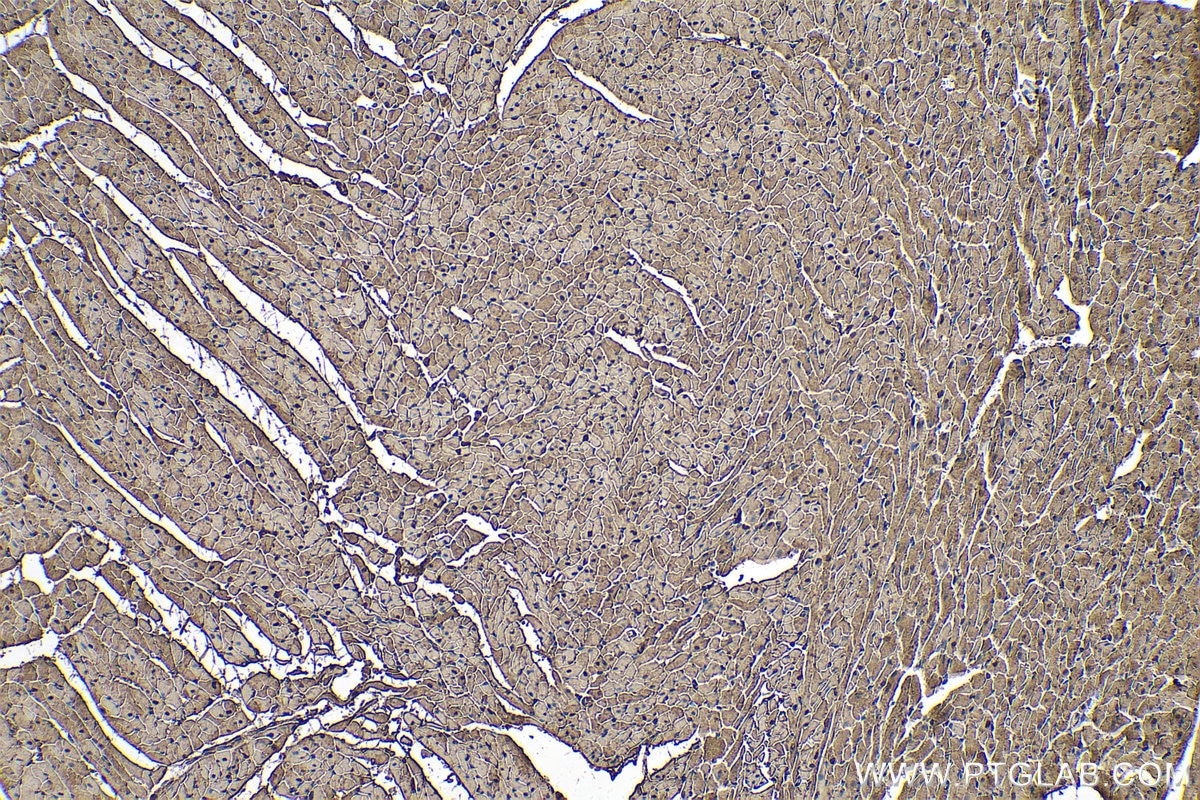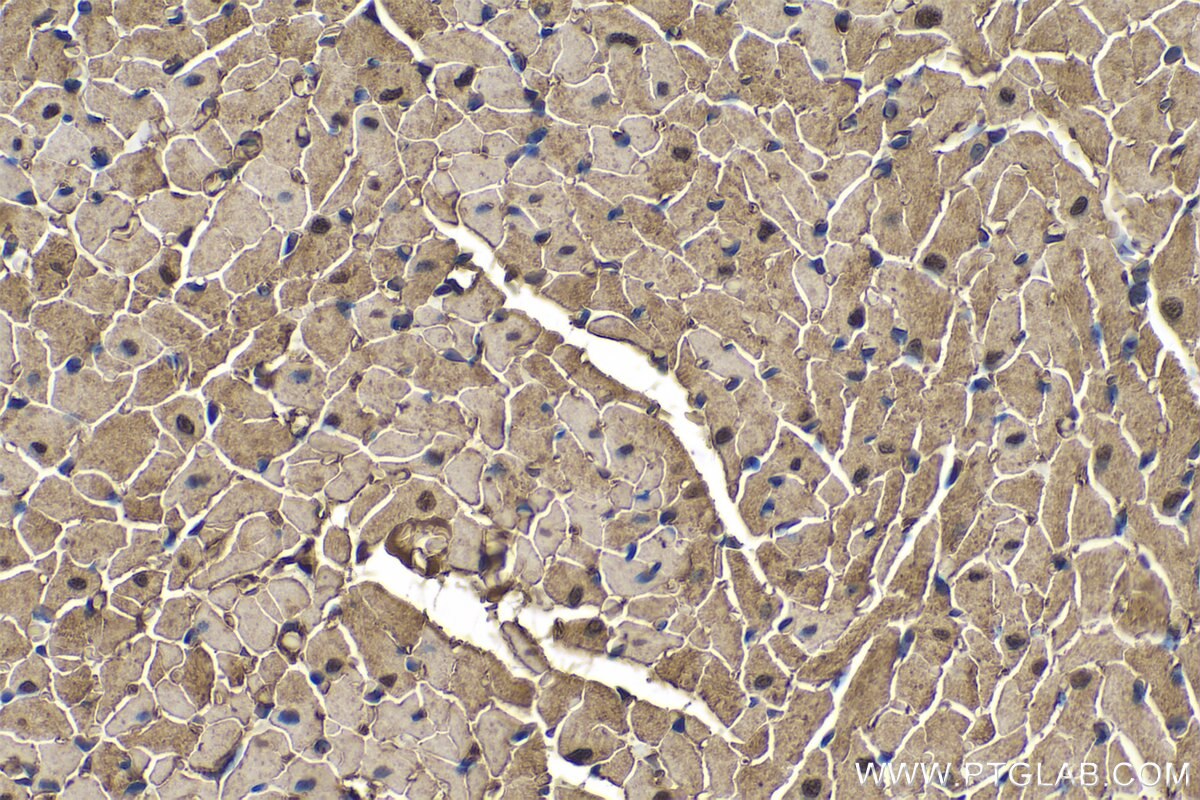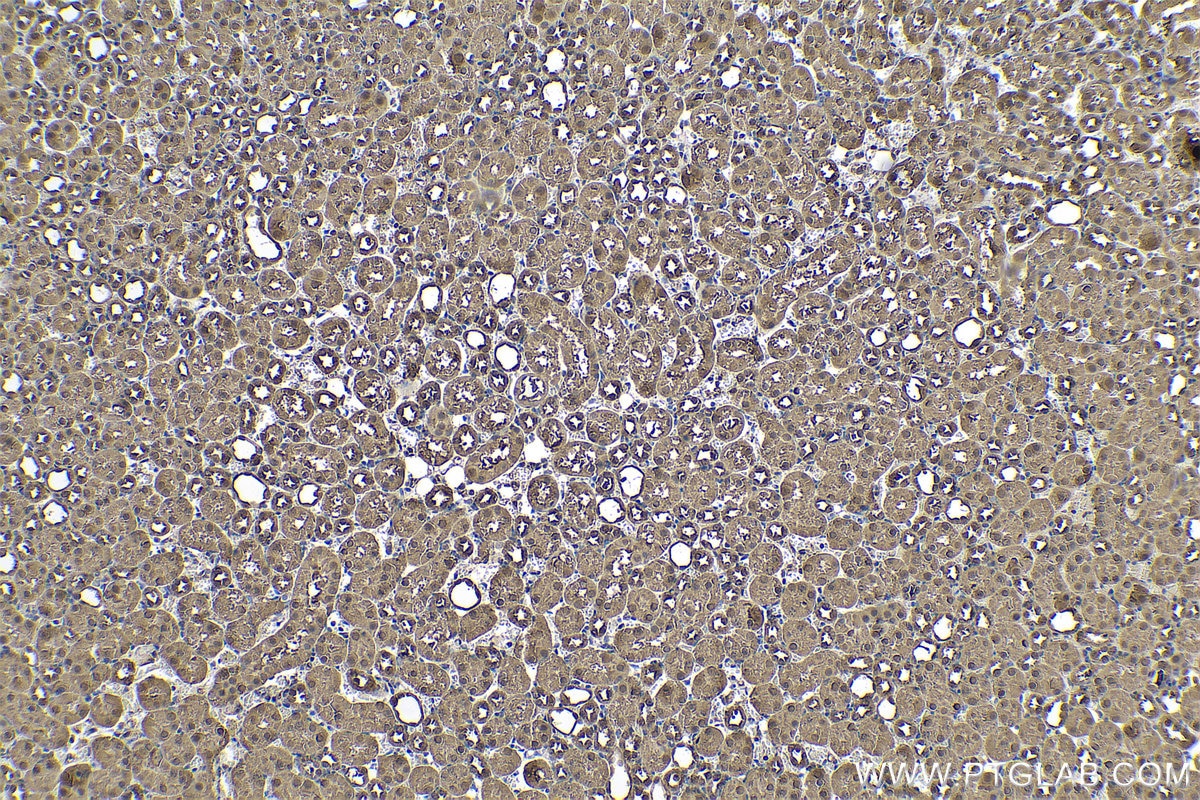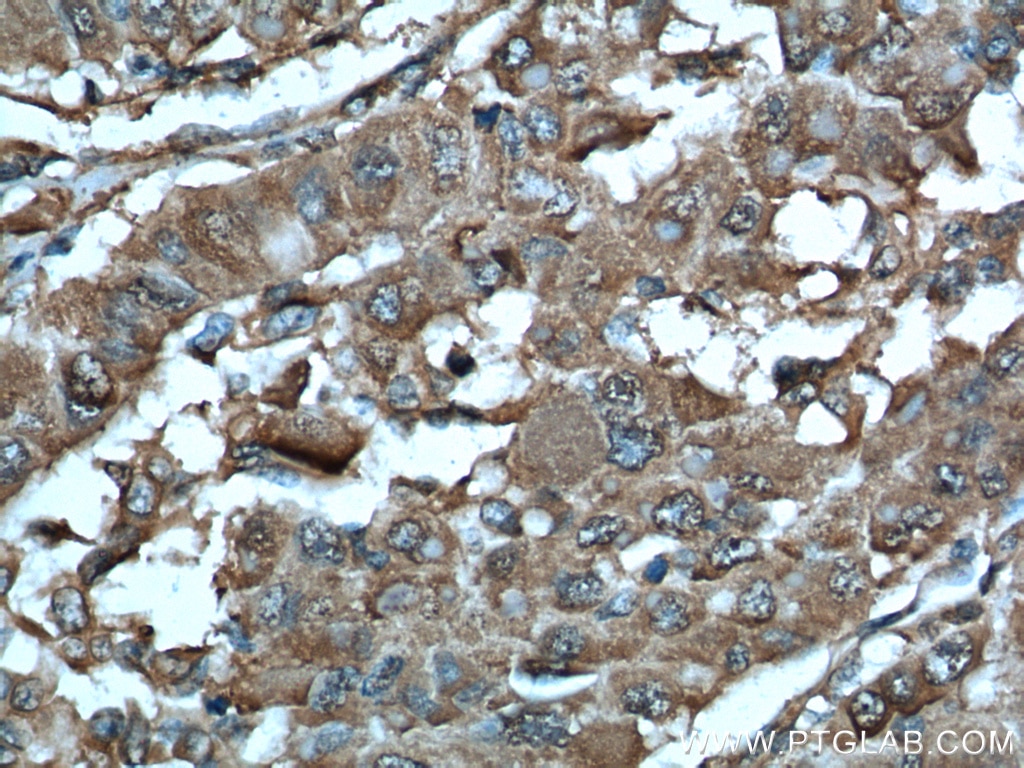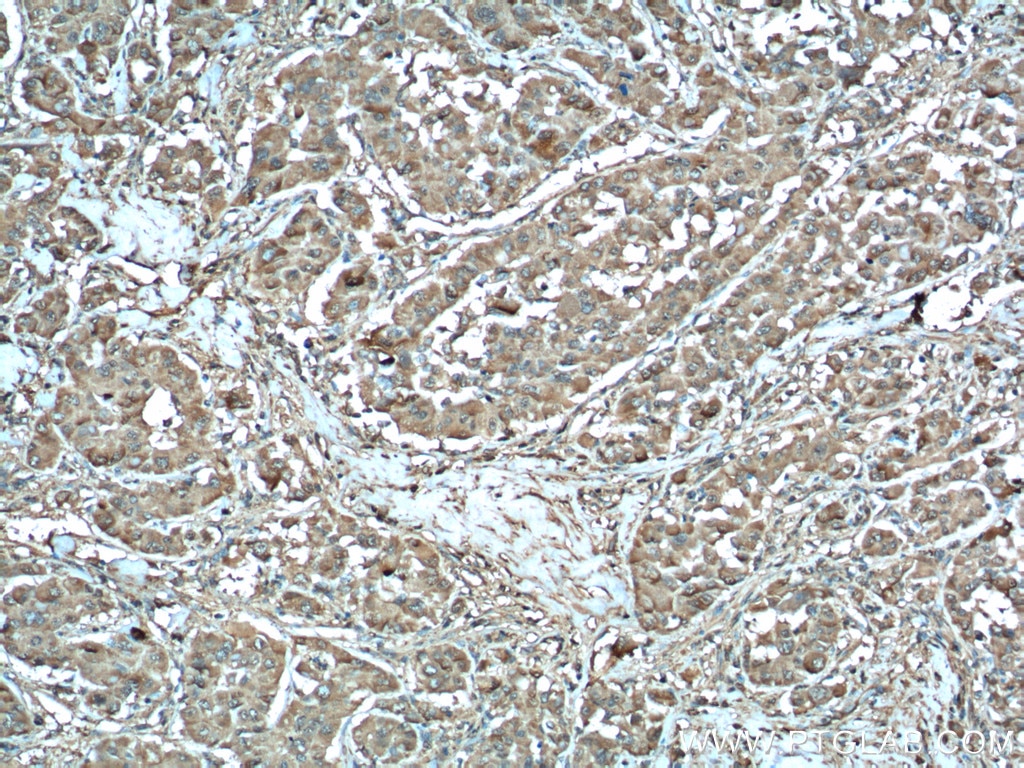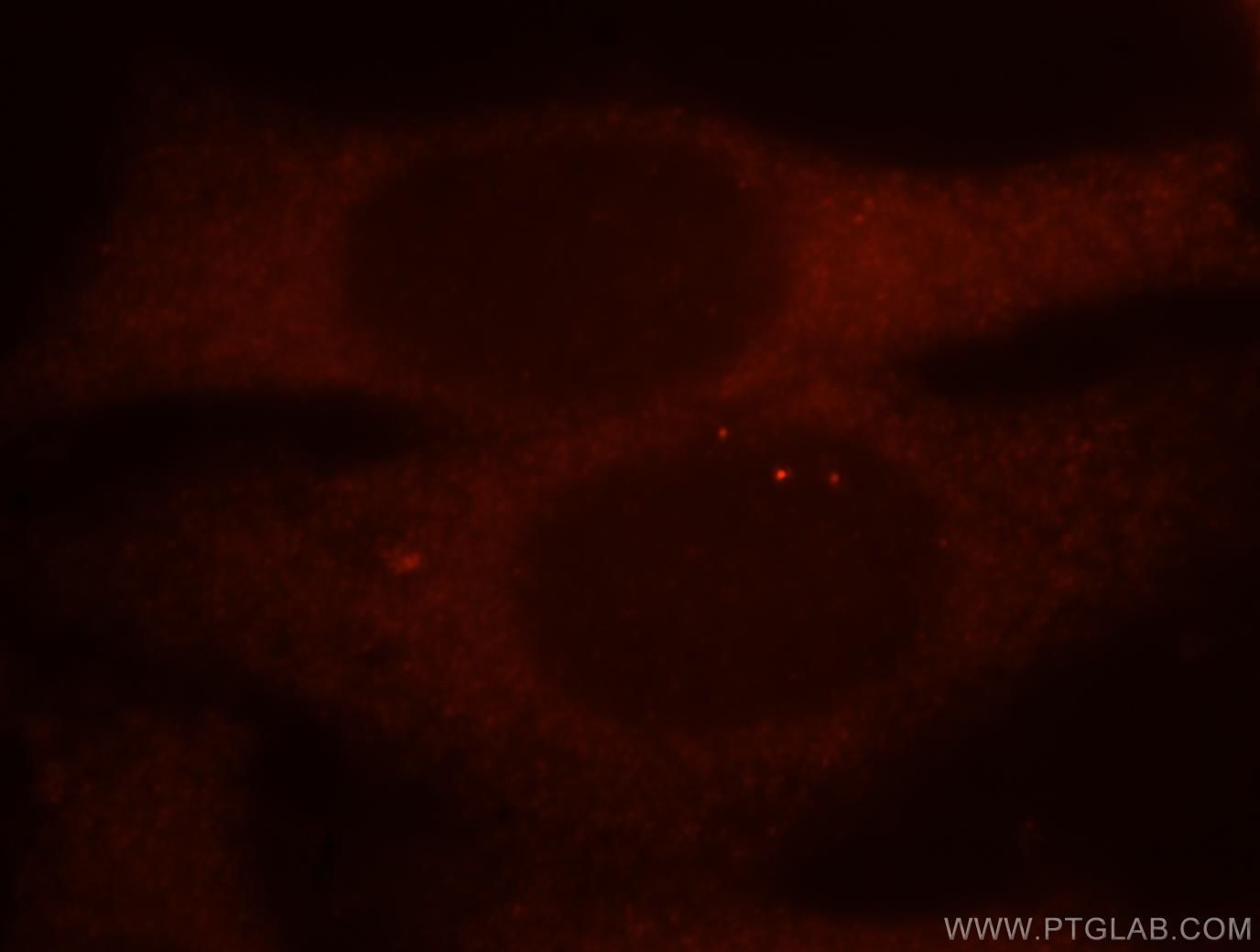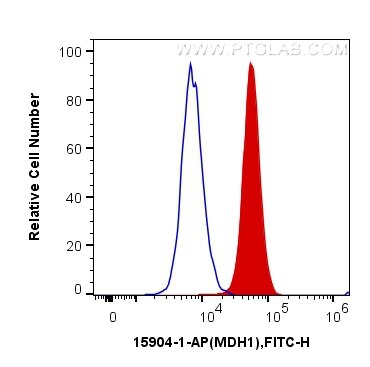- Phare
- Validé par KD/KO
Anticorps Polyclonal de lapin anti-MDH1
MDH1 Polyclonal Antibody for WB, IHC, IF/ICC, FC (Intra), IP, ELISA
Hôte / Isotype
Lapin / IgG
Réactivité testée
Humain, rat, souris
Applications
WB, IHC, IF/ICC, FC (Intra), IP, ELISA
Conjugaison
Non conjugué
N° de cat : 15904-1-AP
Synonymes
Galerie de données de validation
Applications testées
| Résultats positifs en WB | cellules HepG2, cellules HEK-293, cellules HL-60, tissu hépatique de rat, tissu hépatique de souris |
| Résultats positifs en IP | cellules HepG2, |
| Résultats positifs en IHC | tissu de carcinome à cellules rénales humain, tissu cardiaque de rat, tissu de cancer du foie humain, tissu rénal de souris il est suggéré de démasquer l'antigène avec un tampon de TE buffer pH 9.0; (*) À défaut, 'le démasquage de l'antigène peut être 'effectué avec un tampon citrate pH 6,0. |
| Résultats positifs en IF/ICC | cellules HepG2 |
| Résultats positifs en FC (Intra) | cellules HepG2, |
Dilution recommandée
| Application | Dilution |
|---|---|
| Western Blot (WB) | WB : 1:5000-1:50000 |
| Immunoprécipitation (IP) | IP : 0.5-4.0 ug for 1.0-3.0 mg of total protein lysate |
| Immunohistochimie (IHC) | IHC : 1:50-1:500 |
| Immunofluorescence (IF)/ICC | IF/ICC : 1:10-1:100 |
| Flow Cytometry (FC) (INTRA) | FC (INTRA) : 0.40 ug per 10^6 cells in a 100 µl suspension |
| It is recommended that this reagent should be titrated in each testing system to obtain optimal results. | |
| Sample-dependent, check data in validation data gallery | |
Applications publiées
| KD/KO | See 1 publications below |
| WB | See 21 publications below |
| IHC | See 1 publications below |
| IF | See 2 publications below |
| IP | See 3 publications below |
Informations sur le produit
15904-1-AP cible MDH1 dans les applications de WB, IHC, IF/ICC, FC (Intra), IP, ELISA et montre une réactivité avec des échantillons Humain, rat, souris
| Réactivité | Humain, rat, souris |
| Réactivité citée | rat, Humain, souris |
| Hôte / Isotype | Lapin / IgG |
| Clonalité | Polyclonal |
| Type | Anticorps |
| Immunogène | MDH1 Protéine recombinante Ag8744 |
| Nom complet | malate dehydrogenase 1, NAD (soluble) |
| Masse moléculaire calculée | 334 aa, 36 kDa |
| Poids moléculaire observé | 36 kDa |
| Numéro d’acquisition GenBank | BC001484 |
| Symbole du gène | MDH1 |
| Identification du gène (NCBI) | 4190 |
| Conjugaison | Non conjugué |
| Forme | Liquide |
| Méthode de purification | Purification par affinité contre l'antigène |
| Tampon de stockage | PBS avec azoture de sodium à 0,02 % et glycérol à 50 % pH 7,3 |
| Conditions de stockage | Stocker à -20°C. Stable pendant un an après l'expédition. L'aliquotage n'est pas nécessaire pour le stockage à -20oC Les 20ul contiennent 0,1% de BSA. |
Informations générales
MDH1 (Malate dehydrogenase, cytoplasmic) is also named as MDHA and belongs to the LDH/MDH superfamily and MDH type 2 family which catalyzes the reversible oxidation of malate to oxaloacetate, utilizing the NAD/NADH cofactor system in the citric acid cycle. It can exsit as a dimer and the dimeric MDH1 is the mitochondrial isoenzyme, whereas the tetrameric MDH2 is the glycosomal isoenzyme.(PMID:10693743)
Protocole
| Product Specific Protocols | |
|---|---|
| WB protocol for MDH1 antibody 15904-1-AP | Download protocol |
| IHC protocol for MDH1 antibody 15904-1-AP | Download protocol |
| IF protocol for MDH1 antibody 15904-1-AP | Download protocol |
| IP protocol for MDH1 antibody 15904-1-AP | Download protocol |
| Standard Protocols | |
|---|---|
| Click here to view our Standard Protocols |
Publications
| Species | Application | Title |
|---|---|---|
Cell An Essential Role of the Mitochondrial Electron Transport Chain in Cell Proliferation Is to Enable Aspartate Synthesis.
| ||
Cell Res The metabolite α-KG induces GSDMC-dependent pyroptosis through death receptor 6-activated caspase-8. | ||
Blood MDH1-mediated malate-aspartate NADH shuttle maintains the activity levels of fetal liver hematopoietic stem cells. | ||
J Exp Med Inhibiting both proline biosynthesis and lipogenesis synergistically suppresses tumor growth. | ||
Cell Res cMyc-mediated activation of serine biosynthesis pathway is critical for cancer progression under nutrient deprivation conditions. | ||
Nat Commun Lin28/let-7 axis regulates aerobic glycolysis and cancer progression via PDK1. |
